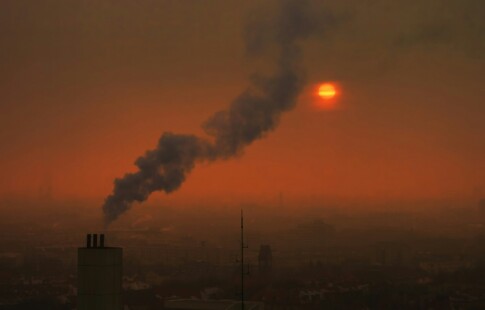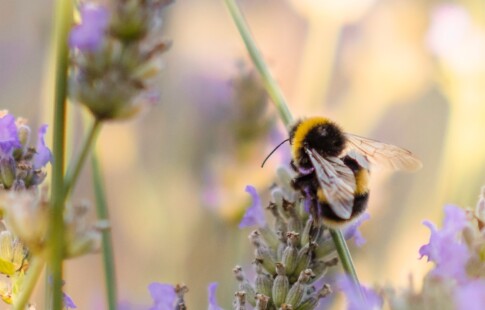
What the Atlantic Garbage Patch Says About Pollution
We are reader-supported. When you buy through links on our site, we may earn affiliate commission.
Currently, our planet faces several environmental-related issues. Though we can blame carbon gas emissions for many problems, it’s crucial to consider plastic pollution, as well. Over time, water bottles and food containers make their way to the ocean. As a result, vortexes of trash and debris form and marine wildlife suffer extraordinarily. The lesser-known Atlantic Garbage Patch can teach us a lot about sustainable efforts. Take a look.
What Is a Trash Vortex?
You’ve probably heard about the Great Pacific Garbage Patch – or that there’s a Texas-sized group of trash between California and Hawaii. Unfortunately, this collection spans 1.6 million square kilometers — about three France’s worth of junk. How does this debris accumulate? The ocean current rotates to create giant whirlpools, otherwise known as gyres. These movements pull items into the center of a particular area.
Right now, there are five gyres throughout the ocean – two in the Pacific, one in the Indian and two in the Atlantic. The North Atlantic whirlpool holds tons of trash. Over recent years, it’s been a bit of a mystery as its collection of plastic and other debris hasn’t expanded. Humans continue to create waste, so what’s happening?
The Breakdown of Plastic
For the most part, experts believe that microplastics are the root cause of this stagnant state. These tiny bits of material come from two places, otherwise known as primary and secondary categories. First, companies formulate microplastics for commercial use, such as cosmetics and textiles. Several countries have implemented microplastic bans, but many businesses haven’t complied. Second, larger plastic objects tend to break down by way of environmental factors. Animals may also take bites out of debris as they mistake them for food. In any case, it’s clear that there’s an issue.
The scientists and students behind a 22-year-long study of the Atlantic Garbage Patch came to a worrisome conclusion. Because microplastics can slip through their research nets, it appears as though the area hasn’t gathered more trash. In reality, it’s likely the size of its Pacific counterparts.
How Garbage Floods the Ocean
It’s impossible to know how much plastic exists in our oceans. However, as the world produced more than 9 billion tons of the material since its invention, it wouldn’t be inaccurate for experts to make massive estimates. If we want to reduce these figures, it’s essential to understand how debris travels to the ocean.
A lot of explanations exist for this problem – and they all center around humans. Beachgoers leave popsicle wrappers and sunscreen bottles behind. Someone throws an empty cup into a sewer, or a household doesn’t have access to recycling. Eventually, rainwater pushes the garbage into drains. Then, it makes its way to a body of water that empties into the ocean.
On top of that, fishers and other boat operators may toss trash off the sides of their vessels. As a result, plastic products wash up on the shores of remote islands or become trapped in an endless loop in the middle of the ocean.
Our Planet’s Plastic-Free Future
What can the Atlantic Garbage Patch tell us about pollution? In a nutshell, plastic never decomposes – but as it breaks down into tiny pieces, it leaves more and more room for additional trash. This debris has changed our oceans’ landscapes for good. When marine wildlife mistakes a plastic toy for food, there’s a widespread problem.
That’s why it’s essential to pursue meaningful alternatives. Many organizations, such as the Ocean Cleanup, look for technological solutions. In 2018, this nonprofit deployed a massive trash collector into the Great Pacific Garbage Patch. Other initiatives continue to pop up around the globe. Unfortunately, however, these projects can’t make a difference unless everyone stops using plastic once and for all.
Luckily, there are millions of people around the world who want to take action. In fact, long-distance swimmer Ben Lecomte decided to swim through the Pacific locations as a way to raise awareness. The event garnered a lot of media attention, but you don’t have to go to those lengths to make an impact. Instead, you can put your time and energy toward specific interests.
Without substantial effort from large corporations, it won’t be easy to make progress. After all, less than 10 companies are responsible for a majority of our planet’s plastic waste. If you’re able to shop locally, you can put your money toward worthy causes. When you buy from big-box retailers, avoid plastic bags and packages. Stay away from single-use objects, like straws and flatware. Plus, be sure to recycle when possible.
Make an Effort to Tackle Pollution Today
Gyres like the Atlantic Garbage Patch cause huge issues – most significantly for marine wildlife. If you want to tackle plastic pollution, there are tons of ways to do so. With everyone’s help, we can accomplish a plastic-free future.
Share on
Like what you read? Join other Environment.co readers!
Get the latest updates on our planet by subscribing to the Environment.co newsletter!
About the author

Jane Marsh
Starting from an early age, Jane Marsh loved all animals and became a budding environmentalist. Now, Jane works as the Editor-in-Chief of Environment.co where she covers topics related to climate policy, renewable energy, the food industry, and more.





